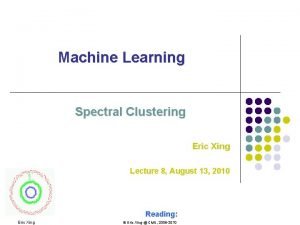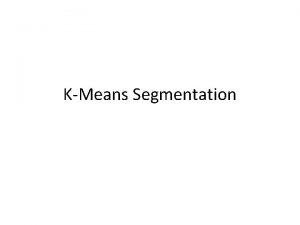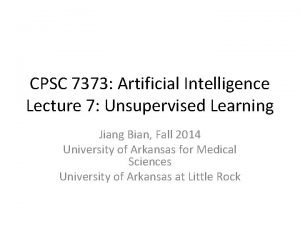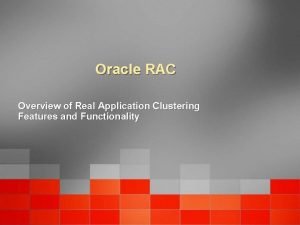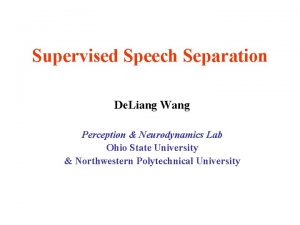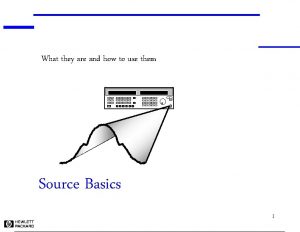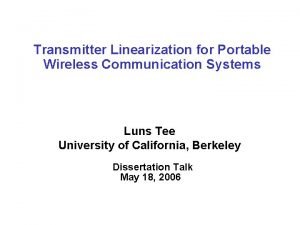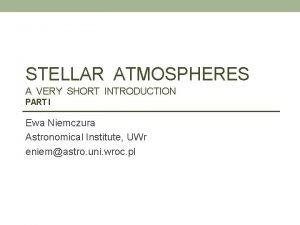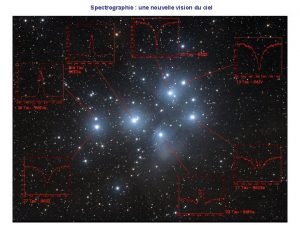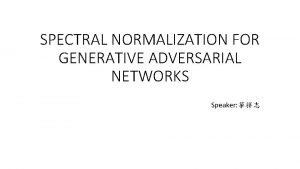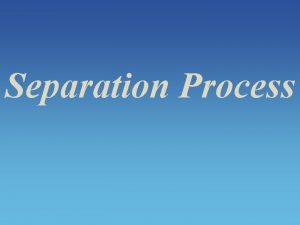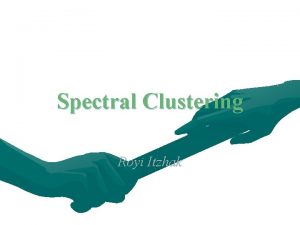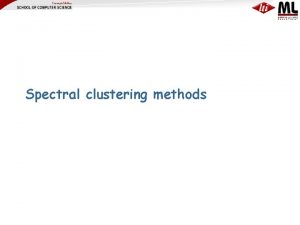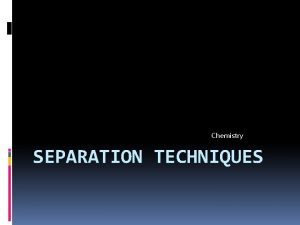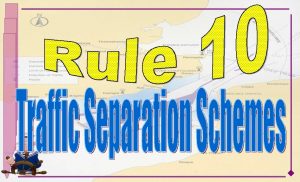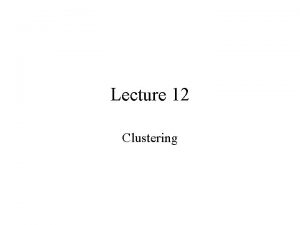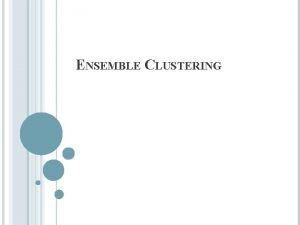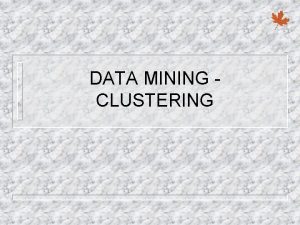Learning Spectral Clustering With Application to Speech Separation














- Slides: 14

Learning Spectral Clustering, With Application to Speech Separation F. R. Bach and M. I. Jordan, JMLR 2006

Outline Introduction Normalized cuts -> Cost functions for spectral clustering Learning similarity matrix Approximate scheme Examples Conclusions

Introduction 1/2 Traditional spectral clustering techniques: – Assume a metric/similarity structure, then use clustering algorithms. – Manual feature selection and weight are time-consuming. Proposed method – A general framework for learning the similarity matrix for spectral clustering from data. Assume given data with known partitions and want to build similarity matrices that will lead to these partitions in spectral clustering. – Motivations: Hand-labelled databases are available: image, speech. Robust to irrelevant features.

Introduction 2/2 What’s new? – Two cost functions J 1(W, E), J 2(W, E), W: similarity matrix, E: a partition. Min. E J 1 New clustering algorithms; Min. W J 1 learning the similarity matrix; W is not necessarily positive semidefinite; – Design numerical approximation scheme for large scale.

Spectral Clustering & NCuts 1/4 R-way Normalized Cuts – Each data point is one node in a graph, the weight on the edge connecting two nodes is the similarity of those two. – A graph is partitioned into R disjoint clusters by minimizing the normalized cut, cost function, C(A, W), V={1, …, P}, index set of all data points A={Ar}rЄ{1, …, R}, Union of Ar=V. is total weight between A and B. , normalized term penalizes unbalanced partition.

Spectral Clustering & NCuts 2/4 – Another form of Ncuts: E=(e 1, …, e. R), er is the indicator vector (P by 1) for the r-th cluster. Spectral Relaxation – Removing the constraint (a), the relaxed optimization problem is solved as follows, – The relaxed solutions generally are not piecewise constant, so have to be projected back to subset defined by (a).

Spectral Clustering & NCuts 3/4 Rounding – Minimization of a metric between the relaxed solution and the entire set of discrete allowed solutions, Relaxed solution: Desired solution: – Try to compare the subspaces spanned by their columns compare the orthogonal projection operator on those subspaces, i. e. Frobenius norm between Yeig. T=UUT and. – Cost function is given as

Spectral Clustering & NCuts 4/4 Spectral clustering algorithms – Variational form of cost function, – An weighted K-means algorithm can be used to solve the minimization.

Learning the Similarity Matrix 1/2 Objective – Assume known partition E and a parametric form for W, learn parameters that generalized to unseen data sets. Naïve approach – Minimize the distance between true E and the output of spectral clustering algorithm (function of W). – Hard to optimize because of non continuous cost function. Cost functions as upper bounds of naïve cost function – Minimize cost function J 1(W, E), J 2(W, E) is equivalent to minimize an upper bound on the true cost function.

Learning the Similarity Matrix 2/2 Algorithms – – – Given N data sets Dn, each Dn is composed of Pn points; Each data set is segmented, known partition En; The cost function is – L-1 norm: feature selection; – Use steepest descent method to minimize H(α) w. r. t α.

Approximation Scheme Low-rank nonnegative decomposition – Approximate each column of W by a linear combination of a set of randomly chosen columns (I): wj=∑iЄIHijwi , jЄJ H is chosen so that is minimum. – Decomposition: Randomly select a set of columns (I) Approximate W(I, J) as W(I, I)H. Approximate W(J, J) as W(J, I)H+HTW(I, J). – Complexity: Storage requirement is O(MP), M is # of selected columns. Overall complexity is O(M 2 P).

Toy Examples

Line Drawings Training set 1 Favor connectedness Training set 2 Favor direction continuity Examples of testing segmentation trained with Training set 2 Examples of testing segmentation trained with Training set 1

Conclusions Two sets of algorithms are presented – one for spectral clustering and one for learning the similarity matrix. Minimization of a single cost function w. r. t. its two arguments leads to these algorithms. The approximation scheme is efficient. New approach is more robust to irrelevant features than current methods.
 Cmu machine learning
Cmu machine learning Spectral clustering
Spectral clustering Spectral clustering
Spectral clustering Flat vs hierarchical clustering
Flat vs hierarchical clustering Bond energy algorithm
Bond energy algorithm Flat clustering vs hierarchical clustering
Flat clustering vs hierarchical clustering Real application clustering
Real application clustering Gyration in size separation
Gyration in size separation Cuadro comparativo e-learning b-learning m-learning
Cuadro comparativo e-learning b-learning m-learning On training targets for supervised speech separation
On training targets for supervised speech separation Spectral regrowth
Spectral regrowth Spectral regrowth
Spectral regrowth Spectral classification
Spectral classification Profil spectral rigel
Profil spectral rigel Spectral normalization gan
Spectral normalization gan
